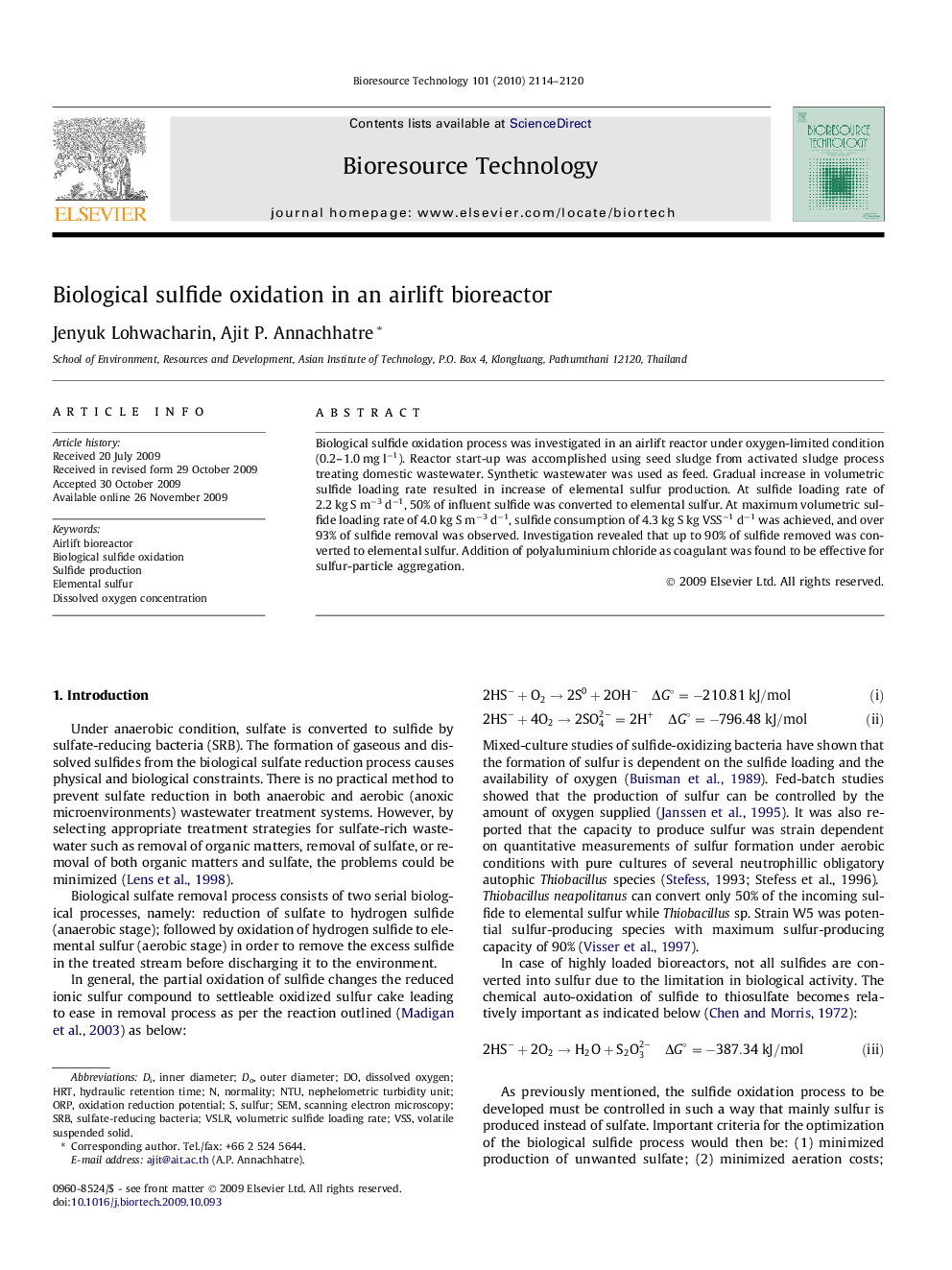| Article ID | Journal | Published Year | Pages | File Type |
|---|---|---|---|---|
| 683833 | Bioresource Technology | 2010 | 7 Pages |
Biological sulfide oxidation process was investigated in an airlift reactor under oxygen-limited condition (0.2–1.0 mg l−1). Reactor start-up was accomplished using seed sludge from activated sludge process treating domestic wastewater. Synthetic wastewater was used as feed. Gradual increase in volumetric sulfide loading rate resulted in increase of elemental sulfur production. At sulfide loading rate of 2.2 kg S m−3 d−1, 50% of influent sulfide was converted to elemental sulfur. At maximum volumetric sulfide loading rate of 4.0 kg S m−3 d−1, sulfide consumption of 4.3 kg S kg VSS−1 d−1 was achieved, and over 93% of sulfide removal was observed. Investigation revealed that up to 90% of sulfide removed was converted to elemental sulfur. Addition of polyaluminium chloride as coagulant was found to be effective for sulfur-particle aggregation.
